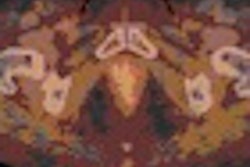In patents with suspected paraneoplastic neurological disorders, PET/CT is "very helpful" in detecting cancer as the cause of the condition when other imaging modalities and clinical exams find no evidence of cancer, according to an article published online January 11 in the Archives of Neurology.
Results of the study from the Mayo Clinic in Rochester, MN, will appear in the March issue of (Arch Neurol, March 2010, Vol. 67:3).
Paraneoplastic neurological disorders occur in some people with cancer, such as lung, breast, or ovarian, and may develop when cancer-fighting antibodies mistakenly attack cells in the nervous system.
"There are a lot of patients with paraneoplastic neurological disorders in the [Mayo] neurology clinic, which means that they are suspected to have a neurological disorder related to an underlying cancer," said lead author Dr. Andrew McKeon. "Not that that means they have any threat of cancer, but it means that they are having an immune response against the cancer that causes neurological problems."
Patient selection
The researchers retrospectively identified 112 patients with neurological symptoms suspected to be paraneoplastic who had undergone other radiologic evaluations, including ultrasound and CT, as well as a full clinical examination, at Mayo between January 2005 and December 2008.
Half of the patients were eliminated from the study because they already had received a PET/CT scan for cancer staging. The remaining 56 patients were suspected of having a paraneoplastic neurological disorder due to the onset of acute or subacute symptoms, a history of cancer, a history of smoking, a paraneoplastic antibody detected in serum or cerebrospinal fluid, and inflammatory spinal fluid.
The patient sample included 28 men and 28 women, with a median age of 61 years (ranging from 22 to 80 years) when the onset of a neurological symptom occurred. Twenty-two patients were smokers and 10 patients had a history of cancer that preceded the neurological symptoms by a median of nine years.
Prior to the PET/CT, all 56 patients received comprehensive evaluations, which included CT of the chest (54 patients) and abdomen and pelvis (49 patients), mammography (15), upper gastrointestinal endoscopy (14), colonoscopy (14), abdominal ultrasound (6), neck ultrasonography (3), and transvaginal ultrasonography of the pelvis (2).
Evidence of cancer
In all 56 cases, no cancer was found with these modalities after the evaluations. "But in these patients, there was still a concern for cancer persisting in the physician's mind, so a PET/CT was ordered," McKeon said.
Using PET/CT, the researchers found the suspicion of cancer in 22 patients (39%). Ten (18%) of those cases were confirmed histologically as cancer upon further evaluation.
Four of the 10 confirmed cancers were found in the neck and out of view of the CT chest, abdominal, and pelvic images. Two cancers were thyroid, one patient had tonsilar cancer, and one cancer was in the cervical lymph node. "So, 40% of the cancers found were outside the normal scope of the [CT] imaging of the chest cavity," McKeon added.
Nine of the 10 cases were early-stage cancers and prompted treatment for the patients. Seven patients received therapy and immunotherapy, two received therapy alone, while one patient was given only immunotherapy.
'Helpful modality'
McKeon also said that while PET/CT is "a very helpful modality" and will help reveal additional cancers, it may not be the "be-all and end-all" in cancer detection with paraneoplastic neurological disorders. He noted PET has its own limitation in detecting liver, renal, bladder, and ovarian cancers. In those cases, ultrasound is generally the modality of choice.
"Recognizing the limitations of PET/CT, we favor this modality for initial oncologic evaluation of patients in whom a paraneoplastic neurologic disorder is strongly suspected," the authors wrote. "Elimination of whole-body imaging with CT alone before further imaging with PET/CT could reduce radiation exposure and the total financial burden of testing."
McKeon said he and his colleagues plan "to prospectively follow patients in the clinic to see if we find any other cancers that we are picking up with PET/CT that we haven't found to date. Secondly, we will look at new antibodies to see if PET/CT is helpful in detecting cancer in those patients."
By Wayne Forrest
AuntMinnie.com staff writer
January 11, 2010
Related Reading
Early FDG-PET/CT may help head and neck cancer therapy, November 20, 2009
FDG-PET/CT scans spot head and neck cancer return, October 14, 2009
FDG-PET/CT helps track pediatric bone and soft-tissue tumors, June 16, 2009
Whole-body PET finds tumors missed by other tests, May 1, 2009
FDG-PET/CT shows early chemo results, April 16, 2009
Copyright © 2010 AuntMinnie.com



















